- Joined
- Oct 9, 2007
- Messages
- 47,499 (7.49/day)
- Location
- Hyderabad, India
| System Name | RBMK-1000 |
|---|---|
| Processor | AMD Ryzen 7 5700G |
| Motherboard | ASUS ROG Strix B450-E Gaming |
| Cooling | DeepCool Gammax L240 V2 |
| Memory | 2x 8GB G.Skill Sniper X |
| Video Card(s) | Palit GeForce RTX 2080 SUPER GameRock |
| Storage | Western Digital Black NVMe 512GB |
| Display(s) | BenQ 1440p 60 Hz 27-inch |
| Case | Corsair Carbide 100R |
| Audio Device(s) | ASUS SupremeFX S1220A |
| Power Supply | Cooler Master MWE Gold 650W |
| Mouse | ASUS ROG Strix Impact |
| Keyboard | Gamdias Hermes E2 |
| Software | Windows 11 Pro |
Last week we got a glimpse of Gigabyte's new 3D BIOS technology, a UEFI setup program with an innovative and functional user interface built into Gigabyte's upcoming X79 motherboards. Today Gigabyte released a new video detailing another such innovation, called 3D Power. This program gives you total and unrestricted control over the three main dimensions of your motherboard's power delivery: voltages, PWM frequency, and phase control. Gigabyte announced that all its upcoming X79 motherboards will feature PWM (pulse width modulation) CPU power design, backed by highly capable PWM controllers that give you a plethora of things you can tweak.
To begin with, the 3D Power application starts up with a cube that has the icons of the three main elements. Clicking on "voltage" gives you control over voltage-related settings in three main pages, turbo voltage response, load line calibration (active V-droop control), and active over-voltage protection. Load line calibration allows you to fine-tune the extant of V-droop correction over a variety of power domains, such as CPU, VTT, IMC, and DRAM.
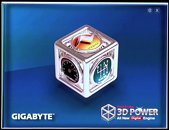
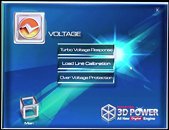
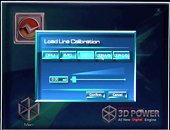
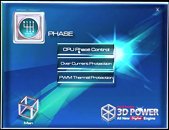
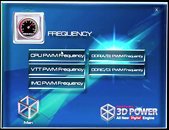
Moving on to Phase Control, and this page gives you settings related to the phases. You can select the number of CPU phases you want active (from the number available), and thereby balance efficiency and power delivery, to do this you can select between six phase-arrangement presets from "Lite Power" all the way up to "Extreme Performance". Then there are other pages that let you configure thermal protection.
Lastly there's frequency. Pulse width modulation is a method of controlling power-delivery by delivering power in pulses to inertial electrical devices. PWM frequency related pages give you access to some very low-level settings such as CPU, VTT, IMC, and DRAM PWM frequencies.
Unlike 3D BIOS, which resides on the motherboard's EEPROM and can be invoked by hitting DEL on system startup, 3D Power is a Windows-based application. One can expect most settings not to be on-the-fly, and requiring system restarts. A press video from Gigabyte can be watched here.
View at TechPowerUp Main Site
To begin with, the 3D Power application starts up with a cube that has the icons of the three main elements. Clicking on "voltage" gives you control over voltage-related settings in three main pages, turbo voltage response, load line calibration (active V-droop control), and active over-voltage protection. Load line calibration allows you to fine-tune the extant of V-droop correction over a variety of power domains, such as CPU, VTT, IMC, and DRAM.





Moving on to Phase Control, and this page gives you settings related to the phases. You can select the number of CPU phases you want active (from the number available), and thereby balance efficiency and power delivery, to do this you can select between six phase-arrangement presets from "Lite Power" all the way up to "Extreme Performance". Then there are other pages that let you configure thermal protection.
Lastly there's frequency. Pulse width modulation is a method of controlling power-delivery by delivering power in pulses to inertial electrical devices. PWM frequency related pages give you access to some very low-level settings such as CPU, VTT, IMC, and DRAM PWM frequencies.
Unlike 3D BIOS, which resides on the motherboard's EEPROM and can be invoked by hitting DEL on system startup, 3D Power is a Windows-based application. One can expect most settings not to be on-the-fly, and requiring system restarts. A press video from Gigabyte can be watched here.
View at TechPowerUp Main Site





